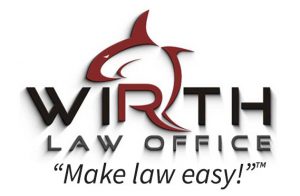F ederal and Oklahoma state bankruptcy laws provide consumers (and businesses) financial relief by offering a total discharge of their unsecured, non-priority debt under Chapter 7 bankruptcy. Alternatively, consumers can restructure their debt payments under Chapter 13 bankruptcy.
ederal and Oklahoma state bankruptcy laws provide consumers (and businesses) financial relief by offering a total discharge of their unsecured, non-priority debt under Chapter 7 bankruptcy. Alternatively, consumers can restructure their debt payments under Chapter 13 bankruptcy.
To learn the differences between filing Chapter 7 and Chapter 13 Oklahoma bankruptcies in Tahlequah, read the following.
Oklahoma Bankruptcies in Tahlequah
There are two basic categories of bankruptcy proceedings in Oklahoma:
- Liquidation (Chapter 7): under which you may receive a complete discharge of your unsecured debt.
- Reorganization or Debt Restructuring (Chapter 13): under which you may restructure your debt to repay some or all of your creditors over a period of time.
Each is subject to specific eligibility requirements that takes into account your income, your assets and the type and amount of debt you have. Here is a survey of the route to debt relief under Chapters 7 and 13 Oklahoma bankruptcies and how they differ:
Chapter 7 Bankruptcy in Tahlequah, Oklahoma
Chapter 7 bankruptcy, also referred to as “straight bankruptcy,” is the most common type of bankruptcy filing. It is available to both individuals and businesses. It typically takes three to six months to finalize or “discharge” a case.
Chapter 7 bankruptcy belongs to the liquidation category as it requires debtors to liquidate “non-exempt” assets in order to pay off secured debt and to receive a total discharge of their unsecured debt..
Qualifying for Chapter 7 Bankruptcy in Tahlequah, Oklahoma
To qualify for Chapter 7 in Tahlequah, Oklahoma, you need to pass a court administered “means test” to determine if you have sufficient income to repay your debts. If you are determined to have sufficient income to repay your debt, you will be ineligible to for a discharge under Chapter 7, but may still be eligible for debt relief under Chapter 13 bankruptcy.
Limits on Discharge Under Bankruptcy in Oklahoma
Typically, credit card debts and other unsecured consumer debts will be completely discharged under Chapter 7 bankruptcy. Secured debts (those for which an asset has been assigned as collateral) will not be discharged under Chapter 7 and will normally be satisfied by the liquidation or repossession of the underlying assets.
Furthermore, certain types of debts, such as child support, alimony, legal fines, and taxes, will not be discharged under Chapter 7 bankruptcy.
Bankruptcy Exemptions in Oklahoma
Oklahoma bankruptcy law exempts certain assets such as clothing, furniture, cars, and your family home, up to a certain dollar value, from being liquidated in Chapter 7 bankruptcy.
For secured debt such as automobiles and home loans, you are allowed to retain the underlying asset by reaffirming the debt or having it sold, repossessed, or foreclosed upon to satisfy the debt.
While under Chapter 7 there is some risk of having to liquidate certain assets to offset secured debt, most debtors who qualify for Chapter 7 bankruptcy receive a complete discharge of their unsecured debt and lose very little in the process.
Chapter 13 Bankruptcy in Tahlequah, Oklahoma
Chapter 13 bankruptcy belongs to the category of bankruptcy proceeding referred to as reorganization (debt restructuring) and allows individuals or businesses to reorganize their debt in order to pay off their creditors over a specified period of time.
Qualifying for Chapter 13 Bankruptcy in Tahlequah, Oklahoma
You may qualify for Chapter 13 bankruptcy if the amount of debt you possess does not surpass certain federally prescribed limits and if you have sufficient income to repay this debt over time.
Restructuring Your Debt Under Chapter 13 Bankruptcy in Tahlequah, Oklahoma
Under Chapter 13 bankruptcy, you are required to submit a plan to payoff certain creditors over a three to five year period and under court supervision. Once you have completed your repayment schedule, you will receive a complete discharge of any remaining unsecured debt.
The size of your installment payments will depend on a variety of factors, such as how much you can afford to pay, the type of debt you possess, how much you owe, and how much unsecured debt would have been satisfied if you were required to file Chapter 7 bankruptcy.
To avoid the repossession of items such as your automobile or the loss of your home through foreclosure, you are allowed to reaffirm these secured debts and make arrangements with your creditors to make up any missed payments by adding them to your proposed repayment plan.
What’s the Difference Between Chapter 7 and Chapter 13?
By far the most significant difference between Chapter 7 and Chapter 13 Oklahoma bankruptcies is the length of time it takes before you receive a discharge. Under Chapter 7 bankruptcy, it takes three to six months to receive a discharge.
However, under Chapter 13, it will be three to five years before you can receive a discharge of any remaining unsecured debt. Furthermore, during this time all of your financial decisions will need to be approved by an appointed trustee of the bankruptcy court.
Another difference is that Chapter 7 bankruptcy will provide you a total discharge of your unsecured debt while exempting most, if not all, of your personal belongings (including your home and vehicle) from being liquidated.
On the other hand, depending on your income level, it may be more difficult for you to qualify for Chapter 7 bankruptcy than for Chapter 13 bankruptcy.
Low-cost Initial Consultation: Tahlequah Bankruptcy Attorney
For a low-cost consultation with a Tahlequah bankruptcy attorney, call 918-458-2677.
Or, as always, you may enter a legal question in the form at the top right of this page.








